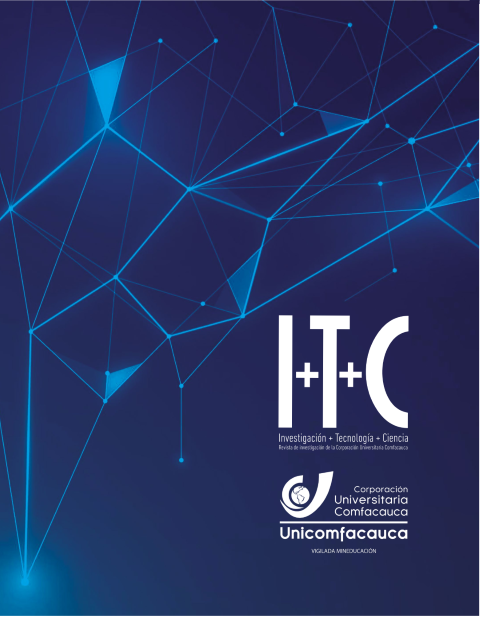Simulación Por Elementos Finitos De Un Molde De Inyección Para El Sistema IPR 2E (Inyección De Polímeros Reciclados De Dos Etapas)
Contenido principal del artículo
Resumen
El objetivo de este estudio es evaluar y optimizar aspectos clave del proceso de inyección, como el tiempo, la presión y la capacidad de llenado, antes de la fabricación física del molde. El estudio utiliza la simulación de elementos finitos con SolidWorks Plastic como herramienta computacional para analizar el rendimiento de dos diseños de canal de inyección, designados H y TAO. Estos canales se prueban para evaluar varios parámetros relacionados con el proceso de inyección. Se determinó que el canal H quedaba descalificado debido a la presencia de líneas de soldadura, que podían comprometer la integridad de las piezas y afectar a la precisión de las pruebas destructivas. El canal TAO, por el contrario, resultó ser muy eficaz en el llenado de la cavidad, ofreciendo tiempos de proceso óptimos y presiones finales excelentes, sin líneas de soldadura perjudiciales. Estos resultados apoyan la selección del canal TAO como la opción preferida para el proceso de llenado del molde del sistema IPR-2E. Así pues, la simulación por elementos finitos está demostrando ser una herramienta esencial en la ingeniería de procesos de moldeo, ya que permite conservar recursos, mejorar la calidad de las piezas y reducir la probabilidad de que se produzcan costosos defectos.
Descargas
Detalles del artículo

Esta obra está bajo una licencia internacional Creative Commons Atribución-NoComercial-CompartirIgual 4.0.
Todos los textos publicados en esta revista se distribuyen bajo una Licencia Creative Commons «Reconocimiento-No Comercial-Compartir igual» desde 2020.
Citas
PNUMA. 2021. “De La Contaminación a La Solución: Una Evaluación Global de La Basura Marina y La Contaminación Plástica.” 2021. https://www.unep.org/resources/pollution-solution-global-assessment-marine-litter-and-plastic-pollution.
ONU. 2023. “Objetivos de Desarrollo Sostenible.” 2023. https://www.un.org/sustainabledevelopment/es/2015/09/la-asamblea-general-adopta-la-agenda-2030-para-el-desarrollo-sostenible/.
SIEMENS. 2022. “Ingeniería Asistida Por Computador.” 2022. https://www.plm.automation.siemens.com/global/es/our-story/glossary/computer-aided-engineering-cae/13112.
Baum, Markus, Fabian Jasser, Michael Stricker, Denis Anders, and Simone Lake. 2022. “Numerical Simulation of the Mold Filling Process and Its Experimental Validation.” International Journal of Advanced Manufacturing Technology 120 (5–6): 3065–76. https://doi.org/10.1007/s00170-022-08888-9.
Bolaños Plata, Omar. 2014. “Importancia de La Simulación En La Mejora de Procesos.” AANA Journal 76 (5): 381–82. http://www.ptolomeo.unam.mx:8080/xmlui/bitstream/handle/132.248.52.100/5884/tesis.pdf?sequence=1.
Roel, Zwich. 2019. “ASTM D638, Propiedades de Tracción Plástico.” 2019. https://www.zwickroell.com/es/sectores/plasticos/termoplasticos-y-materiales-termoendurecibles/propiedades-de-traccion-astm-d638/.
Systems, Dassault. 2021. “Conceptos Básicos Del Análisis.” 2021. https://help.solidworks.com/2021/spanish/SolidWorks/cworks/c_Basic_Concepts_of_Analysis.htm.
Preview, Teh Standard. 2012. ISO 527-2, issued 2012. https://standards.iteh.ai/catalog/standards/sist/99bacfc6-205e-4e39-83a7- df1da8959cfa/iso-527-2-2012.
J. D. M.- Bautista, “Evolução do software de simulação para projeto e construção na indústria,” Polo del Conoc., vol. 5, no. 08, pp. 1333–1343, 2020, doi: 10.23857/pc.v5i8.1665
D. Morelli and S. Nieva, “La Evolución Del Software Libre Cad Para Modelado Paramétrico Tridimensional,” Congr. Argentino Ing., p. 15, 2018


